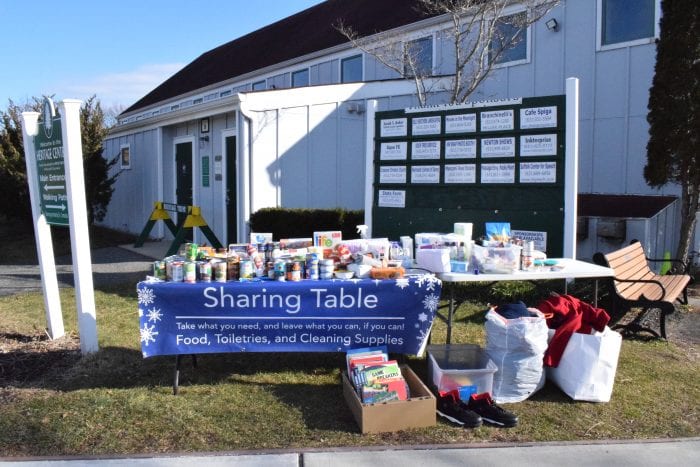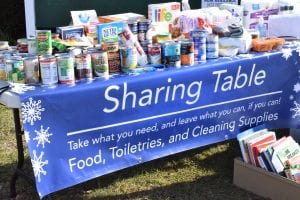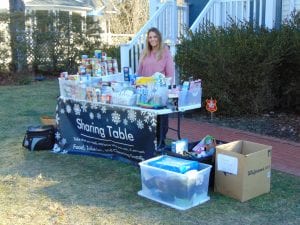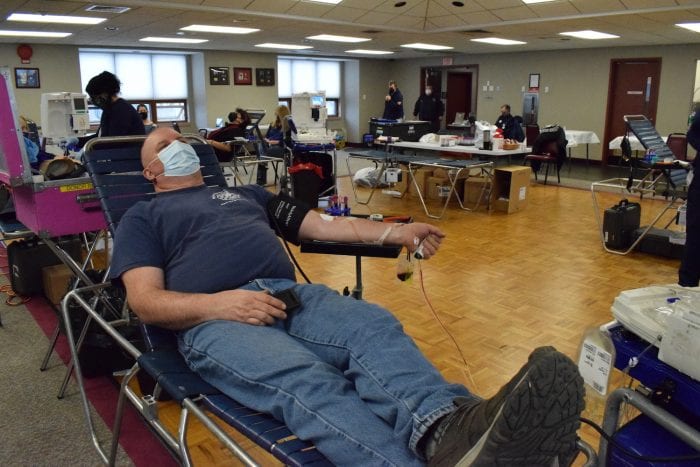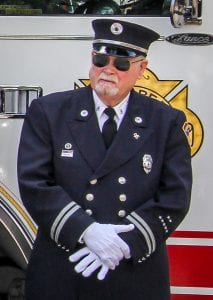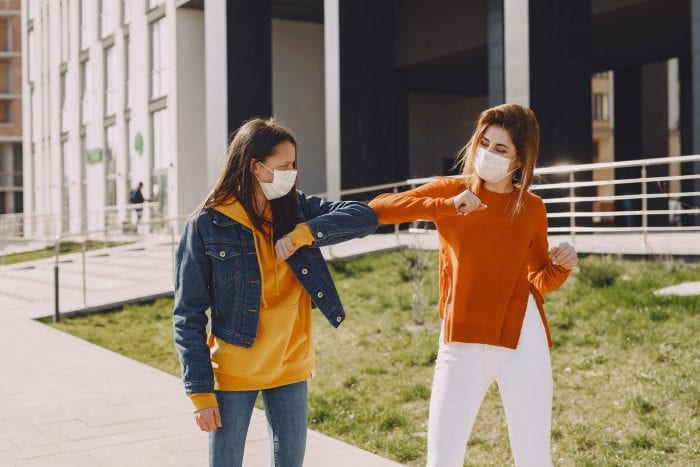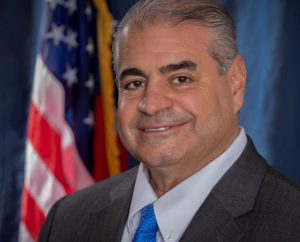
The winter season is upon us, and with a 70 percent chance of 1 to 3 inches of snow on Monday night, Jan. 25 into Tuesday, Suffolk County Legislator Nick Caracappa would like to offer residents helpful tips and websites in preparation for extreme cold weather and winter storms.
“It is important to take simple precautionary measures to keep your family safe and protect your home, pets and personal property during the brutal winter months,” said Legislator Caracappa.
The following information is provided courtesy of https://www.ready.gov/
Winter storms create a higher risk of car accidents, hypothermia, frostbite, carbon monoxide poisoning, and heart attacks from overexertion. Winter storms including blizzards can bring extreme cold, freezing rain, snow, ice and high winds.
A winter storm can:
- Last a few hours or several days.
- Cut off heat, power and communication services.
- Put older adults, children and sick individuals at greater risk.
IF YOU ARE UNDER A WINTER STORM WARNING, FIND SHELTER RIGHT AWAY
- Stay off roads.
- Stay indoors and dress warmly.
- If you need to spend time in a public indoor space in order to stay safe from the cold, follow CDC precautions to protect yourself and others from COVID-19: wear a mask and maintain a distance of at least six feet between yourself and those who are not a part of your household. Masks should not be worn by children under two years of age, those who have trouble breathing, and those who are unable to remove them on their own.
- Prepare for power outages.
- Use generators outside only and away from windows.
- Listen for emergency information and alerts.
- Look for signs of hypothermia and frostbite.
- Check on neighbors while following the latest guidelinesfrom the Centers for Disease Control and Prevention (CDC) on maintaining social and physical distancing. https://www.cdc.gov/coronavirus/2019-nCoV/index.html. Consider connecting with family and friends by telephone, e-mail, text messages, video chat, and social media. If you must visit in person, wear a mask and maintain a distance of at least six feet from them.
HOW TO STAY SAFE WHEN A WINTER STORM THREATENS:
Prepare NOW
- Know your area’s risk for winter storms. Extreme winter weather can leave communities without utilities or other services for long periods of time.
- Prepare your home to keep out the cold with insulation, caulking and weather stripping. Learn how to keep pipes from freezing. Install and test smoke alarms and carbon monoxide detectors with battery backups.
- Know your winter weather terms. https://www.weather.gov/bgm/WinterTerms
- Pay attention to weather reports and warnings of freezing weather and winter storms.
- Sign up for your community’s warning system. The Emergency Alert System (EAS) and National Oceanic and Atmospheric Administration (NOAA) Weather Radioalso provide emergency alerts. Sign up for email updates about coronavirus from the Centers for Disease Control and Prevention (CDC) here: https://www.cdc.gov/Other/emailupdates/.
- Gather supplies in case you need to stay home for several days without power. Keep in mind each person’s specific needs, including medication. Remember the needs of your pets. Have extra batteries for radios and flashlights. If you are able to, set aside items like soap, hand sanitizer that contains at least 60 percent alcohol, disinfecting wipes, and general household cleaning supplies that you can use to disinfect surfaces you touch regularly.
- Create an emergency supply kit for your car. Include jumper cables, sand, a flashlight, warm clothes, blankets, bottled water and non-perishable snacks. Keep a full tank of gas.
- Remember that not everyone can afford to respond by stocking up on necessities. For those who can afford it, making essential purchases and slowly building up supplies in advance will allow for longer time periods between shopping trips. This helps to protect those who are unable to procure essentials in advance of the pandemic and must shop more frequently. Being prepared allows you to avoid unnecessary excursions and to address minor medical issues at home, alleviating the burden on urgent care centers and hospitals.
- Learn the signs of, and basic treatments for, frostbite and hypothermia.
- If you are sick and need medical attention, contact your healthcare provider for further care instructions and shelter in place, if possible. If you are experiencing a medical emergency, call 9-1-1 and let the operator know if you have, or think you might have, COVID-19. If possible, put on a mask before help arrives.
Learn the symptoms of COVID-19 https://www.cdc.gov/coronavirus/2019-ncov/symptoms-testing/symptoms.html
Frostbite causes loss of feeling and color around the face, fingers and toes.
-
- Signs: Numbness, white or grayish-yellow skin, firm or waxy skin.
- Actions: Go to a warm room. Soak in warm water. Use body heat to warm. Do not massage or use a heating pad.
- Hypothermia is an unusually low body temperature. A temperature below 95 degrees is an emergency.
- Signs: Shivering, exhaustion, confusion, fumbling hands, memory loss, slurred speech or drowsiness.
- Actions: Go to a warm room. Warm the center of the body first—chest, neck, head and groin. Keep dry and wrapped up in warm blankets, including the head and neck.
Survive DURING
- Stay off roads if at all possible. If trapped in your car, then stay inside.
- Limit your time outside. If you need to go outside, then wear layers of warm clothing. Watch for signs of frostbite and hypothermia.
- Be sure to have several clean masks to use in case your mask becomes wet or damp from snow. Cloth masks should not be worn when they become damp or wet. Be sure to wash your mask regularly.
- Avoid carbon monoxide poisoning. Only use generators and grills outdoors and away from windows. Never heat your home with a gas stovetop or oven.
- Reduce the risk of a heart attack by avoiding overexertion when shoveling snow and walking in the snow.
- Masks may make it difficult to breathe, especially for those who engage in high intensity activities, like shoveling. If you are unable to wear a mask, maintain a distance of at least six feet between yourself and those who are not part of your household.
- Watch for signs of frostbite and hypothermia and begin treatment right away.
- If it is safe to do so, check on neighbors while following the latest guidelines from the Centers for Disease Control and Prevention (CDC) on maintaining social and physical distancing. Consider connecting with family and friends by telephone, e-mail, text messages, video chat, and social media. If you must visit in person, wear a mask and maintain a distance of at least six feet from them. Masks should not be worn by children under two years of age, those who have trouble breathing, and those who are unable to remove them on their own.
Be Safe AFTER
- Frostbite causes loss of feeling and color around the face, fingers, and toes.
- Signs: Numbness, white or grayish-yellow skin, and firm or waxy skin.
- Actions: Go to a warm room. Soak in warm water. Use body heat to warm. Do not massage or use a heating pad.
- Hypothermia is an unusually low body temperature. A temperature below 95 degrees is an emergency.
- Signs: Shivering, exhaustion, confusion, fumbling hands, memory loss, slurred speech, and drowsiness.
- Actions: Go to a warm room. Warm the center of the body first—chest, neck, head, and groin. Keep dry and wrapped up in warm blankets, including the head and neck.
- If you are sick and need medical attention, contact your healthcare provider for further care instructions and shelter in place, if possible. If you are experiencing a medical emergency, call 9-1-1 and let the operator know if you have, or think you might have, COVID-19. If possible, put on a mask before help arrives.
- Engage virtually with your community through video and phone calls. Know that it’s normal to feel anxious or stressed. Take care of your body and talk to someone if you are feeling upset. Many people may already feel fear and anxiety about the coronavirus 2019 (COVID-19). The threat of a winter storm can add additional stress. Follow CDC guidance for managing stress during a traumatic event and managing stress during COVID-19.
- It is important to help our first responders by removing snow around fire hydrants.
For more safety and health-related guidelines, visit https://www.cdc.gov/.


